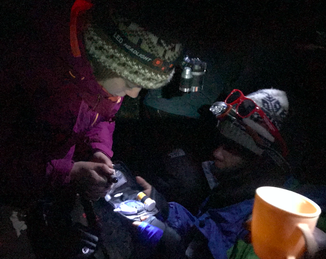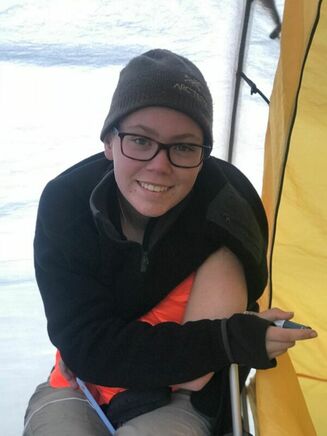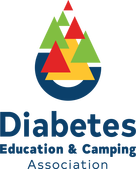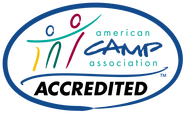 Have you ever agreed to something, under the impression that another person was joking, and then realized too late that they weren’t? Well that’s what happened when my dad said, “Let’s climb Mount Kilimanjaro, you’ll already be in in Africa,” after I had asked if I could go on my school’s summer trip to Tanzania. He and I had never done anything remotely similar to this. We had hiked in the woods for maybe an hour or two and skied a couple times but I completely assumed he was joking. A couple weeks later the idea came up again, and then again, until I realized he was indeed under the impression that we would actually climb the tallest mountain in Africa. At that point in time I couldn’t run half a mile without literally breaking down in tears, so I was thinking No Way. Two years before all of this happened I was diagnosed with diabetes. At the time I didn’t really know what diabetes was and they are now telling me I have a life long illness, you know how the story goes. But when I was in the hospital they made the point to make sure I knew my life could be “normal.” She’ll still live a normal life they would say to my parents, don’t worry. There were two things wrong with this 1. They told my parents not to worry, as if my parents could stop worrying and 2. They told me I could live a “normal” life. What if I don’t want a normal life. I want to live an extraordinary life. When I was in the Eighth grade I wrote an essay about why being called weird was possibly the biggest compliment ever! Since, I have never wanted to live an ordinary life, to me, this was the same thing as saying she will be limited. So when my dad presented this opportunity to me I eventually decided to take the challenge and be extraordinary. This summer I proved to myself and hopefully to many others that an extraordinary life is possible as long as we don’t see diabetes as an obstacle but rather a part of ourselves that we need to account for. However, before we even left to start the route, we met with a diabetes educator and we talked about everything that needed to happen before and during our accent. She informed us that... 1. My Pump probably wouldn’t work over ten thousand feet so I would have to use shots up to 3 weeks before the climb to get used to them again. 2. Every day I would probably have to eat 600 grams of carbs in order for my Glucagon shot to work 3. My Insulin could crystallize so it would have to be kept above freezing 4. I could encounter Altitude sickness. Altitude sickness can cause dizziness, nausea, lightheadedness, loss of appetite, racing heart, heavy breathing, does it sound like anything else I might encounter? This was a big concern for me because I could be low, or high, or I could just be experiencing the inevitable altitude sickness so we would have to check my blood sugar and then check it again. I had learned to rely on how I felt so to know I couldn’t trust my body had me concerned. 5. The Chemistry of blood changes as you go higher in altitude so a blood sugar test could be up to 90% inaccurate at the top. 6. I needed to drink a lot of water or it could be very harmful to me especially as a diabetic. 7. This might be obvious, but if I don’t take supplies I need, I won’t have them Now that I knew how to deal with this element that I had to account for it was time to prepare, before I would climb I would have to train. I would have to run some days and do long leg workouts others to not only see if I would be able to do the climb itself, but to see how my blood sugar would react to certain extremes. Over the summer my dad and I went to Colorado to train and test the altitude as we got to the beginning of the summit climb on one of the fourteeners my Omnipod failed. At that point I didn’t have anything to stop the annoying continuous beeping my discarded pod was producing so my father proceeded to smash my pump with a rock until the noise finally ceased. We in theory were prepared but as we got on the bus Sunday, July 8, I all of a sudden had the feeling I was forgetting something? Did we have enough carbs, enough Insulin? What if the insulin crystallizes? Would I be able to tell the difference between low and high and altitude sickness? What if I have to come back down? This is all I could think about during the 4 hour bus drive to the mountain. The climb was 8 days and 7 nights total 6 days up, a summit, and 1 day down on the Lemosho route. We would hike anywhere from 2 ½ to 15 hours any given day and we would gain a total of 16,000 feet. Each day we would hike and stop at the next campsite where, along with other hikers we would establish our camp for the night. Even though some days were shorter they were just as important because it would give us time to acclimate to the new altitude of that nights camp. Our tent had a traditional two person tent, where we slept, hooked inside of a large tent which provided us with two kind of rooms the second of which had a table and chair for our meals. The space was tight and we couldn’t stand up, however it provided shelter from the bone chilling wind. We passed through almost all the climate zones. It’s winter there, because it’s in the southern hemisphere, so It was cold when we started, even colder at night, and colder as we went up, except for a random hotspot we found on day four. Speaking of hotspots, all though we didn’t have any access to internet, and were told that there wouldn’t be cell service we found that randomly I could call my mom from over 14,000 feet in the air. On occasion we would take acclimatization hikes which would help us to judge how we would react as the climb went on. The first night on the mountain my dad stayed up all night worrying about whether or not I had brought my glucagon shot from the hotel room, he hadn’t seen it with the other supplies we were keeping warm that night and began to worry. My dad didn’t want to wake me just in case something was wrong, in his words, it would be pointless for the two of us to be up all night worried. The next morning I woke up and showed him that I had brought it with me and calmed him down but this didn’t stop him from worrying. We were constantly worried about what could happen. Knowing that each day I would have to eat at least 600 grams of carbs in order to replenish my glucose stores, which was hard due to the fact that my dad and I didn’t know what we would be eating until they had brought the steaming platter into our tent. My dad ended up buying more snack bars than I could count. We didn’t end up eating them all and were happy to see the children of Moshi Town, the town at the base of Kilimanjaro, finish them off for us as well as the cookies that we had bought at a local store. In order to help my numbers stay in check it was very important that I hydrate. However, the nights were cold and full of much needed sleep so I didn’t want to get up in the middle of the night to go to the bathroom, I found myself chugging 4-6 liters of water, about 1 to 1.5 gallons of water, early in the day and drinking some tea after lunch and another cup with dinner. My dad and I would have fun competitions to see who could drink all of their water first, I only won once, and only because I had to use a lot of water to take my altitude and malaria pills. Along with my Malaria pills at night I took my Tresiba which I would often find, had bubbles that had formed from altitude change. I would always take a needle, turn the pen upside down, and dial the pen a few units just so I could clear the bubble out and still the very next day I would find a new bubble in my pens. Along with the cookies we had bought a bottle of Sprite just in case altitude sickness got the best of me. Some of the more extreme versions of altitude sickness proved to be more common than I had originally thought. We passed many people who had to turn back because of altitude sickness, we even saw a lady power through some more mild symptoms one day just to have to turn around the next because she had gotten sick. Another time, 3 days into the 8 day climb, my dad and I woke up in the middle of the night to hear people talking on radios evacuating a man who, let’s just say, wasn’t having the best night. Although we were prepared for altitude sickness we hadn’t really thought through where to put my insulin. When we got there we decided that during the day we would make sure not all of the insulin was in the same spot. My dad would have some and I would have others and some of it we would keep in our overnight bags that the porters carried on their heads. We would make sure we had back ups just in case anything happened to my supplies and back ups for my back ups. When we learned that our insulin could crystallize, we didn’t really know what to do. We didn’t want to sleep on it or with in our sleeping bags because we didn’t want to crush it. We eventually decided that the best place for my diabetes supplies was between our mattresses. On summit night, however, we could not keep the insulin in the crack because we wouldn’t be sleeping there all night, so we decided to ask the cook to keep most of the supplies in his kitchen tent where he cooked our dinner and small midnight breakfast over a small fire. We took one of everything up with us in pockets of our base layers. As we ascended summit night we saw many people turn around and give up, we saw a lady whose friend had gone down proudly continue on. She hiked about a mile more and then gave in herself. We had an extra porter hike with us and our guides just in case they had to carry us down summit night. We saw people getting sick and I couldn’t blame them because I was also extremely nauseous. And to be honest no one would fault me for turning back. The thought had crossed my mind many times but each time it did I thought to myself, "I Can do it, I Can be Extraordinary." After we reached what’s called Stella Point, less than half a mile from the top the sun began to rise and all of a sudden I forgot about everything. And I realized me, the 14 year old type one diabetic, who was told by kids at school that she couldn’t do it, I was just on top of the world, I was here, I had made it. I had proved that diabetes was just another element that I had to account for just like I had to train and physically condition for the trip, it wasn’t some obstacle that I had to let stand in my way until someone figured out how to fix it for me, it was something that I needed to figure out how coexist with. You don’t know what it’s like to work to reach the stars until you are on top of the world and you finally realize you made it!!
0 Comments
Your comment will be posted after it is approved.
Leave a Reply. |
Archives
February 2022
|
QuestionPro provides unparalleled insights and just launched enterprise features including Communities, Customer Experience, Workforce and Mobile


 RSS Feed
RSS Feed

